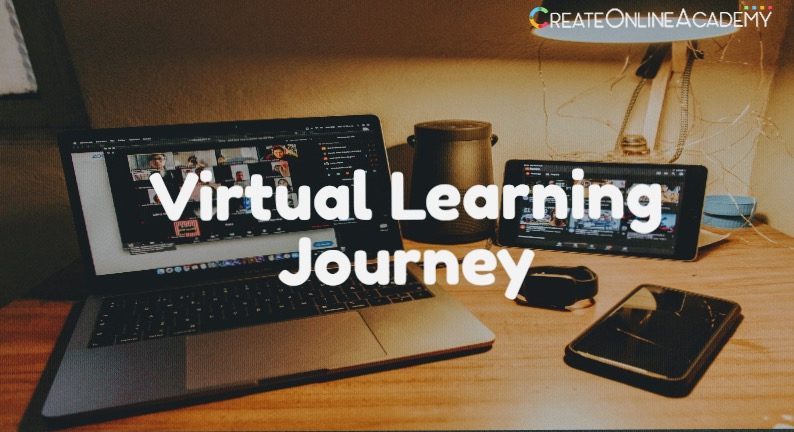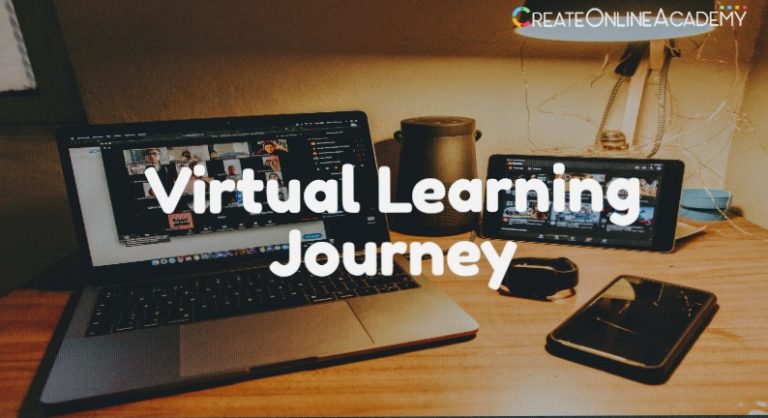Why & How Create An Online Corporate Training Courses?

To create online employee training and development is simple and, as with all simple things, it is more difficult than one may initially think. The reason does not only lie in the development of the eLearning courses, but also in how they are received by learners.
Here are five factors to take into consideration when planning to improve employee engagement by creating online training courses.
Align Online Training To Career Development
From a corporation’s perspective, each training course has to align with its business objectives. From a learner’s perspective, it has to tie well with their own career goals.
According to The Deloitte Millennial Survey 2016, 71% of respondents said they were likely to leave their company within the next two years because their leadership skills were not being fully developed. At the same time, professional development was their fifth top priority when evaluating job opportunities.
Conducting regular and rigorous training needs analyses, as well as implementing an effective talent management strategy is a win-win situation: it leads to developing and retaining high-potential employees, which then has a positive knock-on effect on the company’s branding.
Learning paths
Learning is a process, not an event. To reflect this in training, we have come up with the idea of learning paths, which are sets of multiple content items combined and they allow you to create online training that is simply better.
Both Facebook and Google are using learning paths in their online training academies, not to mention LinkedIn’s Lynda, which specializes in them.
There are three main reasons why these top companies have turned to them:
a) Each learner can find or create paths that match their personal goals
b) When in context, an extra value is added to each course
c) They offer meaningful insight into each learner’s behavior, which can then be further capitalized on.
Ask your middle management to create learning paths relevant to their teams. At the same time, give learners the option to create personalized paths according to their needs. To make things work seamlessly, there is only one prerequisite, which takes us to our next point.
Learning repositories
Imagine being an employee who constantly seeks to develop new skills. You access your LMS from time to time, only to find out that you have already completed all the courses and learning paths relevant to your role. Would you not feel a bit discouraged? Or even undervalued?
Learning repositories are the central libraries with digital resources, which, through an LMS, reach the learner’s screen. In theory, the bigger the enterprise, the bigger the learning repositories must be. However, according to CIPD‘s Learning & Development Annual Survey Report 2015, the larger organizations, with more than 250 employees, tend to have a smaller budget per employee.
As there is no magic recipe to solve this problem, the training team have to keep juggling the balls until they find what suits them best. A key fact to take into consideration is that when a company’s L&D budget is expanded, the workload increases as well.
Gamification
Gamification is the circuit that runs through an enterprise and engages departments and individuals into a healthy form of competition.
A few years ago, the only person who would know if someone was not a keen learner would be their manager. Gamification has changed this completely, and this is why it has been a popular buzzword in eLearning.
Deloitte was the first big company to gamify its training in 2012. Within six months, it reported a 37% increase in returning users to its Leadership Academy. Like everything else, there is a catch: “Traditional leaderboards are, in fact, counter-productive. The same consistent top users, with astronomic scores, turn off everyone who knows they have no chance of beating them”, says James Sanders, Manager of Innovation at Deloitte Consulting.
So, do allow competition among your staff, but prevent it from evolving into a rivalry that could discourage some of them. Training should be fun, not a box ticking exercise.
LMS
Needless to say, none of the above can be possible without an LMS that allows staff to undertake the training they need in the way they want, at the pace they can.
Best 6 Practical Tips To Create Online Courses for Employees
Having to create online courses for employees can be intimidating – especially when you and your employees are busy. Building online courses for employees doesn’t have to be a source of stress though.
In actuality, there are strategies that you can put in place to make your course creation a well-oiled machine. We’ve boiled down these strategies into 6 tips that give you easy wins when creating your employee training courses.
How to Create Online Courses for Employees?
1. Tools for building online training courses for employees
Acquiring the appropriate tools goes a long way when developing online courses for employees.
If it’s to be more productive with your course planning and creation, Trello is the perfect planner. For fast screen recording and editing, Camtasia works well. For top authoring tools, there’s Articulate Storyline, Adobe Captivate and more.
An initial investment in course creation tools sets you up for success in the long run. It enables you to swiftly and effectively create online training for employees. Your courses are better planned and look good – essential elements to high learner engagement.
2. Recycle resources for course content
One time saving, yet impactful way to create training courses is to look at the resources you already have.
By recording a classroom-based session and converting it into a video module, taking marketing resources and repurposing them into text-based courses or modifying a webinar or presentation into short videos, you can successfully create online courses.
Not only is it a timesaver for you, it also allows your employees to digest important company materials, and review content they may have previously missed.
3. Link to outside resources
While you make the most of resources internal to your organization, you should also look to assets available externally.
You’re likely to find tons of videos on YouTube, journal articles, blog posts and more that relate to and elevate the topics you’re delivering training on.
You can embed videos in your courses or link out to these helpful resources to give your content extra weight and help you learners gain a deeper understanding.
Just make sure you’re getting your info from a trusted source!
4. Add multimedia to your employee courses
Adding multimedia is a potent way to add substance to your courses. It boosts learner engagement too.
We suggest you start small. Add stock images or graphics to your text-based courses to give an immediate visual upgrade.
After this first move, you can explore design tools that enable you to create custom graphics, videos, audio and more.
5. Rely on templates
If you’re just starting out or creating multiple courses at once, then there is no need to start building from scratch.
Course templates are a brilliant way to create course after course in the same style and structure. We see businesses making templates themselves in Powerpoint or Google Slides. Or you can find well-made templates online that you can simply copy and paste your course content in to and go.
6. Keep the learning goals in mind
The most effective course builders always keep their goal in mind. It gives the course a purpose, streamlines it and sets an obvious target for the learner to reach.
Therefore, when you’re creating online course content, start with your end goal and work backward. This will make the course content much more succinct and increase the likelihood of success.
Great online courses for employees is all about taking that first step
No matter what training experience you have or the size of your business, you have to start somewhere! The trick is to take advantage of the resources you already have and discover the new resources that will help you create your training.
Test, track and better your training. You’ll see what works, what doesn’t and you can iterate from there so you can deliver the best training experience for your learners.
Reference:-
https://www.talentlms.com/blog/create-online-training-course-employees/ https://www.learnupon.com/blog/create-online-courses-employees/









